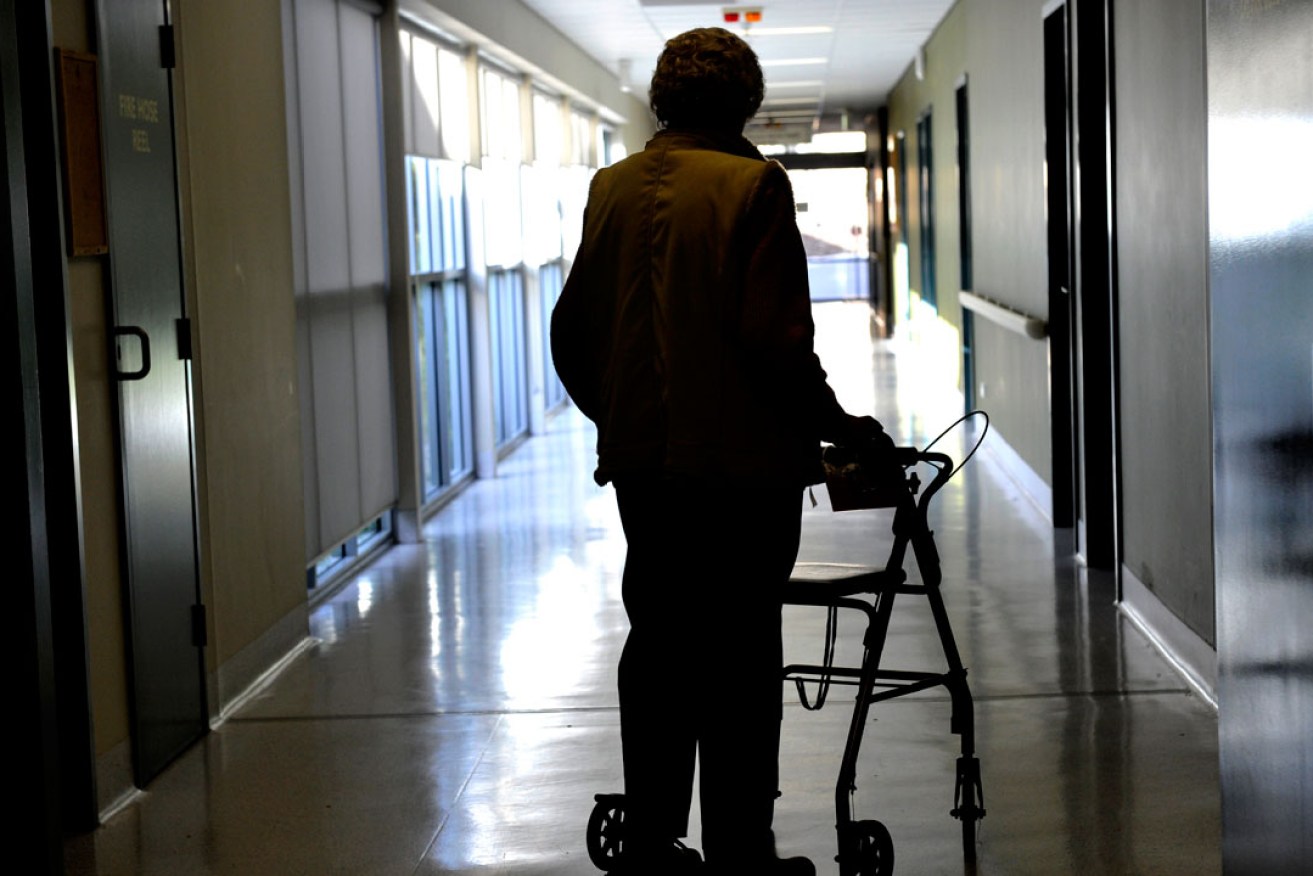How do we protect the rights of people in aged care?
Mandatory comprehensive training for aged-care workers in identifying elder abuse and more information about reported assaults are key to better protecting older people, writes advocate Carolanne Barkla.

Photo: AAP
People in aged-care facilities are entitled to both privacy and safety
The recent ABC 7.30 story on elder abuse in an Adelaide aged-care facility is shocking.
Much of the discussion since the report has been focussed on the right to privacy of both residents and staff versus the right to safety of older people in aged care. It is also concerning to hear the amount of commentary on the “greyness” of the law and whether it is lawful to have a safety camera in a resident’s room.
Surely whether or not to have a camera in their own room is a decision for the older person or their substitute decision-maker? If not, then it should be.
The older person has usually paid for the accommodation. The accommodation is considered to be a person’s home and people have “security of tenure” so that they are able to remain in the one location. There are very limited circumstances where they can be asked to leave or move within a home.
We are not talking about a public space. This is a private space where care workers are meant to knock before entering the room and people’s personal belongings can be brought with them. It is not a hospital.
There are some personal-care needs – such as showering or toileting – that may not be appropriate to record, and the older person or their representative should be able to turn off the camera to ensure privacy when they wish.
In a consumer-directed “market”, an older person should be able to say what makes them feel safe and what the boundaries of their privacy should be.
Older people are entitled under the Charter of Care Recipients’ Rights and Responsibilities to have both privacy and safety. They or their representative should also be able to rely on the aged-care staff to be alert to changes in behaviour or unexplained bruising that may indicate elder abuse is occurring. Aged-care staff are responsible for residents’ safety.
It is important to acknowledge that many aged-care providers and staff work with advocacy services when elder abuse is suspected, and that it is compulsory for providers to report suspected or alleged instances of physical or sexual abuse of residents by staff.
But how do you recognise signs of elder abuse if the older person cannot speak to say that an aged-care worker shoved food into their mouth or spat on them? If older people bruise easily anyway, what else should you be looking for? Subtle signs may include where they display nervousness and anxiety with certain people, crying or indicating they are in pain when being touched, or acting fearfully. Any behavioural changes should be investigated.
If staff or family members do have concerns, they should raise them with the facility’s manager in the first instance. If they are not happy with the response, they should consider complaining to the Aged Care Complaints Commissioner and/or seek support from an Aged Rights Advocacy Service (ARAS) advocate.
It is important that all aged-care workers have mandatory comprehensive training to identify elder abuse.
In 2014/2015 across Australia, 2625 “reportable assaults” were notified to the Department of Social Services (now Department of Health) as required by compulsory reporting legislation. This represents 1 per cent of the total number of people living in residential aged care.
The service provider is also required to report to the police. The police will most likely determine whether to proceed, depending on a number of facts, including evidence.
It is at this point, however, that we lose any further information or data about what happens to these reports: we don’t know if they led to an investigation and prosecution, whether there was enough evidence, and whether or not that evidence was considered reliable or unreliable (perhaps because the alleged victim had dementia). We need to know the outcome of the reports and if there are barriers within the system that may be preventing prosecutions.
With 50 per cent of older people in residential aged care having dementia and increasingly complex health-care needs, we are likely to see a larger number of older people who are unable to voice that they are being abused. Who will be the voice for these people?
For advocates working in elder abuse, it is the stories we don’t hear that keep us awake. This is why it is so important for all aged-care staff to have elder abuse awareness training – the community is relying on them to recognise the subtle signs that it may be occurring.
It is also critical that police officers, health professionals, aged-care senior staff and managers have training on how to respond to allegations or suspicions of abuse made by staff, representatives, family or friends.
Finally, it is important that older people and their decision-maker know that they can contact the Aged Rights Advocacy Service to access free confidential information, support, education and advocacy to uphold their rights and to live free from elder abuse.
Aged Rights Advocacy Service can be contacted on (08) 8232 5377 or country toll-free, 1800 700 600. The Elder Abuse Prevention Phone Line is 1800 372 310.
Carolanne Barkla is chief executive of the Aged Rights Advocacy Service.




